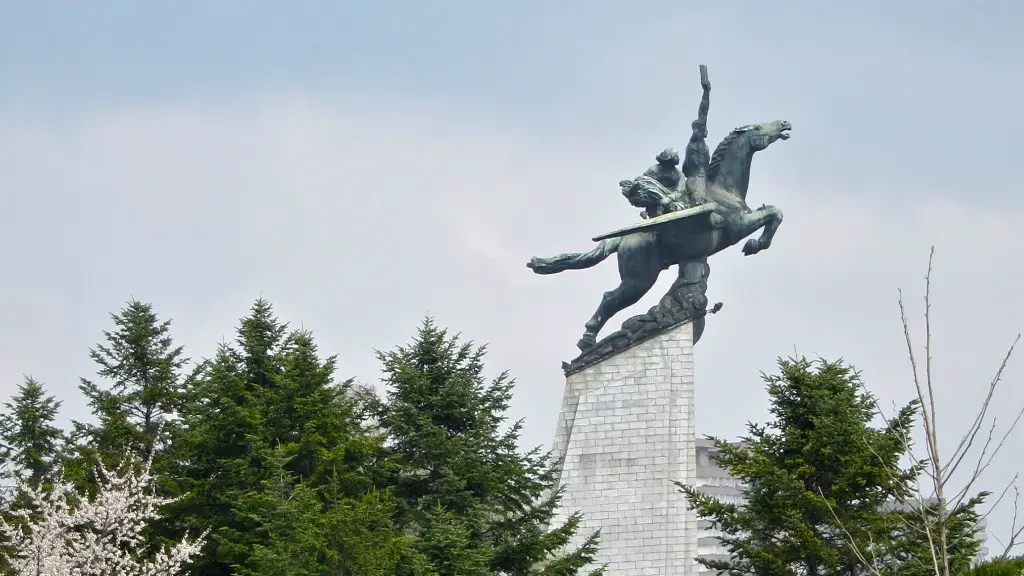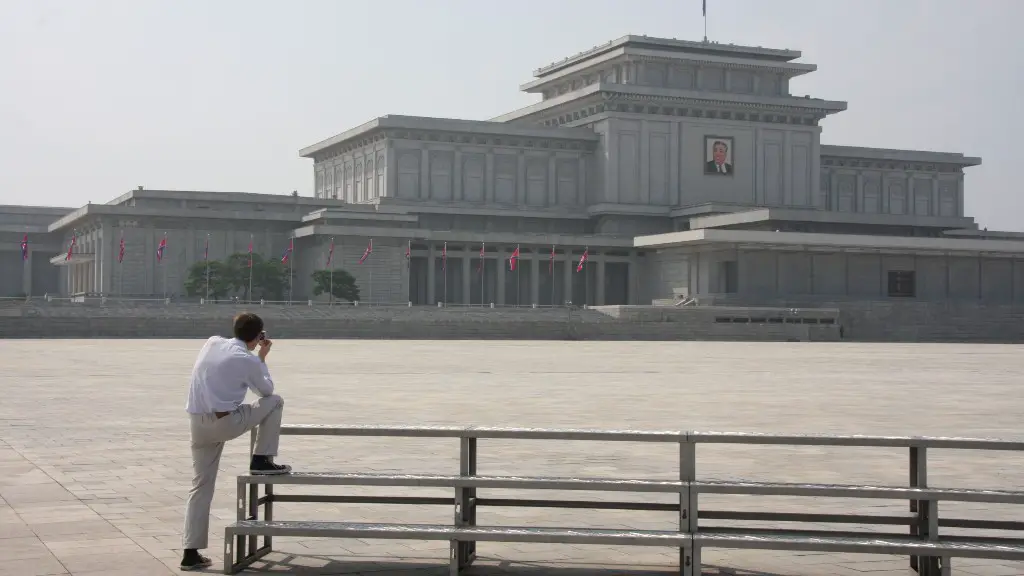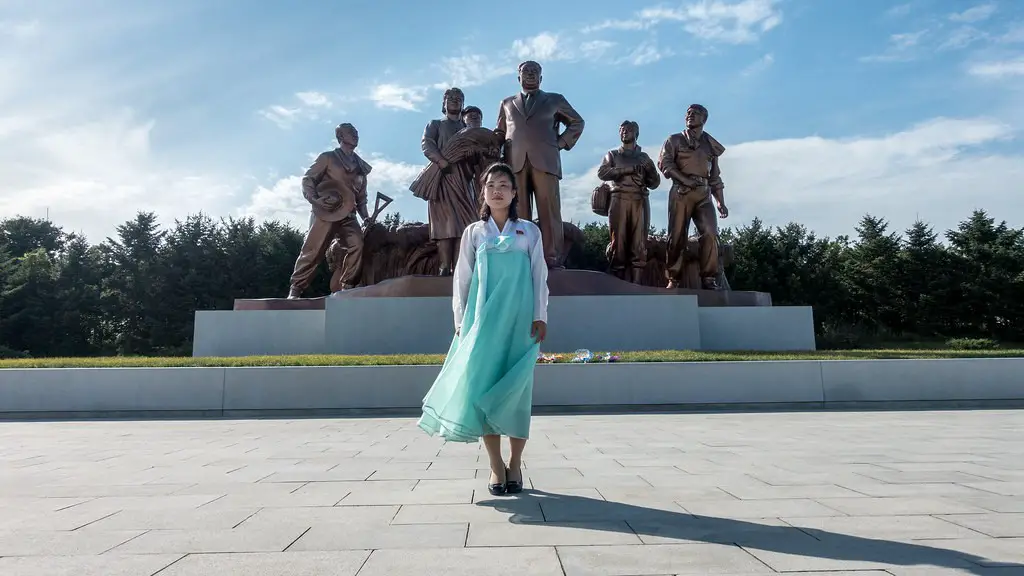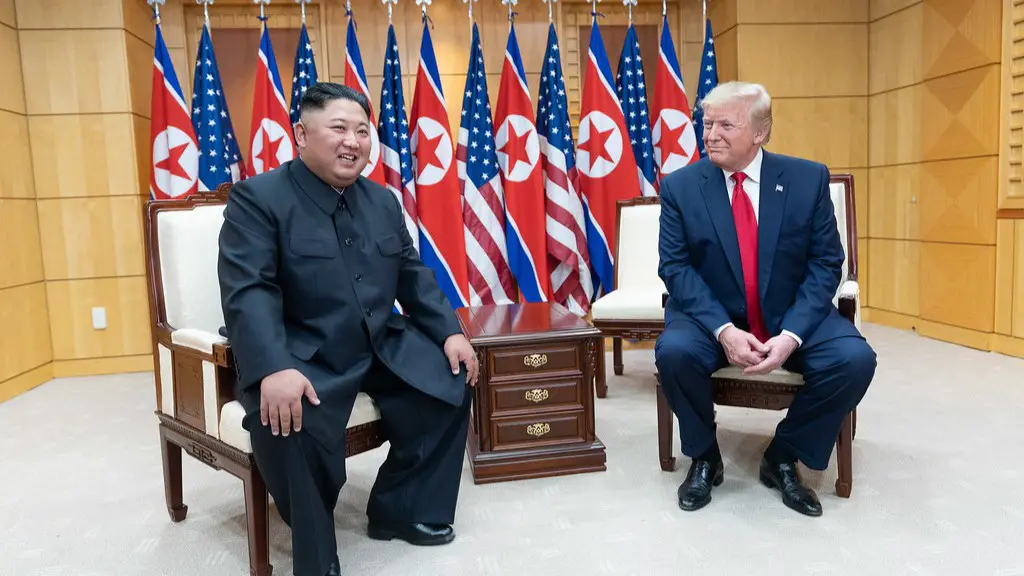North Korea boasts one of the most impressive arsenals of weapons on the planet. They have a nuclear weapons program, intercontinental ballistic missiles and an expansive conventional military force. Although much of their military capability is outdated and obsolete, they have been able to build a formidable deterrent to both regional powers, such as South Korea and Japan, and to global powers such as the United States.
Nuclear Weapons: North Korea has developed several nuclear warheads and has tested several missiles and long-range ballistic missiles that could reach the US mainland if successful. It is estimated that they have enough material to build 10 to 20 nuclear warheads depending on their design. In addition to having the ability to launch their own missiles, they are also capable of launching a nuclear strike using missiles purchased from other countries.
Intercontinental Ballistic Missiles: North Korea currently has intercontinental ballistic missiles capable of reaching targets in Japan and potentially even the US mainland. They have tested several different missile designs and are believed to be attempting to develop more. North Korea is believed to possess several other types of ballistic missiles, such as short-range and medium-range missiles, which can reach targets across their own borders.
Conventional Military Forces: North Korea has a large military consisting of ground forces, air forces, navy forces, and chemical and biological weapons. Their ground forces are estimated to be around 3 million, equipped with tanks, armored personnel carriers, artillery, and a wide variety of small arms. Their air forces are estimated to have around 2,500 combat aircraft, including bombers, fighter jets, and transport aircraft. They also have a navy consisting of roughly 50 submarines, 400 surface vessels, and an unknown number of patrol boats. In addition to this, they have a considerable amount of stockpiled chemical and biological weapons.
North Korea’s weapons are mainly composed of outdated technology, equipment, and weapons, such as tanks and fighter jets dating back to the Cold War era. Despite this, experts agree that North Korea still represents a significant threat to its regional neighbors and potentially the United States. Their nuclear weapons program is especially concerning, as it remains unclear as to how close they are to being able to launch a nuclear attack. It is believed that North Korea is still years away from being able to do this, but this nonetheless remains a significant worry.
The international community has tried to pressure North Korea into giving up its nuclear weapons program for years. However, the lack of progress and the regime’s continued belligerence towards its neighbors and the United States has made this difficult. Sanctions have been imposed by the United Nations, but North Korea has proven unwilling to give up its nuclear ambitions, even in the face of economic hardship. For now, it seems that the international community will have to come to terms with North Korea as a nuclear power.
Nuclear Missile Technology
North Korea’s nuclear missile technology has advanced significantly in recent years. They have tested several different types of missiles, ranging from short to long range, in the hope of one day being able to deliver nuclear warheads. They have been able to increase the range of their missiles and are believed to be working on a more advanced version of an intercontinental ballistic missile.
Although North Korea has yet to successfully test an intercontinental ballistic missile, it is believed that they are continuing to work on the technology. Such a missile would give North Korea the capability to launch nuclear strikes on countries far away, such as the United States. North Korea has stated that they will never give up their nuclear weapons, which is a cause for significant concern among the international community.
The US military has increased their anti-missile defense systems in response to the threat posed by North Korea. This includes the deployment of defensive missile shields, radar systems, and additional military personnel. President Trump has also hinted at the possibility of military action against North Korea if they continue to develop their nuclear program.
Although diplomacy has been the main approach thus far in trying to resolve the North Korea issue, the lack of progress has caused many to consider other options. Increasing economic sanctions is one possibility, although this has had little success so far. Some have also mentioned the possibility of a “bloody nose” strike, which would involve a limited US attack in response to a North Korean provocation.
The US and North Korea continue to be at odds with one another and there is no end in sight to the conflict. The North Korea situation is a complex one and there is no easy solution. Ultimately, it is up to the international community to come up with a diplomatic solution that can both mitigate the threat posed by North Korea’s nuclear program and ensure peace and stability in the region.
Non-Nuclear Weapons
In addition to their nuclear weapons, North Korea is believed to possess a sizable arsenal of non-nuclear weapons. This includes medium and short range missiles, cruise missiles, anti-aircraft missiles, anti-ship missiles and more. North Korea is known for its proliferation of weapons, and has previously been accused of selling weapons to other countries, including Syria and Iran.
North Korea’s air force is one of the largest in the world and is composed of both modern and outdated fighter jets and bombers. They also possess a considerable amount of artillery, which is capable of launching conventional shells and chemical and biological weapons. In addition to this, they have a fleet of submarines and surface vessels, some of which are nuclear-powered.
The threat posed by North Korea’s non-nuclear weapons should not be underestimated. They still have the ability to cause significant destruction, especially in the event of a war on the Korean peninsula. The US military has taken steps to prepare for this, such as deploying a missile defense system in South Korea and bolstering their existing forces in the region.
The non-nuclear weapons that North Korea has can also be used to intimidate their neighbors and the global community. North Korean warships have been accused of violating territorial waters of other nations, and the North Korean air force has been accused of aircraft incursions into South Korean airspace.
Furthermore, North Korea is believed to possess chemical and biological weapons, which could be used against both civilian and military targets. These weapons of mass destruction represent a significant threat to both regional powers and to the US and other nations, as they are capable of causing significant destruction and loss of life.
Thus far, the North Korean regime has been unwilling to give up its nuclear program or reduce its non-nuclear weapons stockpile. Despite the economic sanctions placed on them by the international community, they remain firm in their stance. As long as the North Korean regime remains in power, the threat of their nuclear and non-nuclear weapons remains.
Missile Defense Systems
One of the ways that the international community is attempting to counter the threat posed by North Korea is through the development and deployment of missile defense systems. These systems are designed to intercept and destroy incoming ballistic missiles and are deployed by various nations around the world.
The US has deployed several missile defense systems in the region, such as the Terminal High-Altitude Area Defense system in South Korea, and their own advanced missile defense systems in the US and Guam. These systems are designed to intercept North Korea’s ballistic missiles before they can reach their targets, and can potentially protect the US mainland from attack.
In addition to these systems, the US also has plans to deploy additional missile defense systems in other parts of the world. This includes the deployment of ground-based missile defense systems in Europe, Japan, and the US. These systems are designed to provide the US and its allies with a layer of protection against the threat posed by North Korean missiles.
Other countries, such as China and Russia, have also developed their own missile defense systems in an attempt to protect against a North Korean attack. China’s missile defense system is believed to be even more advanced than the US’s, and is designed to protect against both short and long range missiles. Russia has also developed their own missile defense system, which is centered around the controversial S-400 air defense system.
While missile defense systems can provide some protection against North Korea’s weapons, they are not foolproof. North Korean missiles are often unpredictable and the effectiveness of the systems is limited. Furthermore, the US has been unsuccessful in attempts to get China and Russia to join their missile defense system, leaving those countries vulnerable to attack.
International Diplomacy
Despite the increasing threat posed by North Korea’s weapons, the international community has thus far been unsuccessful in attempts to pressure the North Korean regime into giving up its nuclear ambitions. Various diplomatic efforts have been undertaken in an attempt to resolve the issue, but these have so far been met with little success.
The United Nations Security Council has imposed several rounds of economic sanctions against the North Korean regime in an attempt to pressure them into giving up their nuclear program. These have included bans on trade and on certain goods, such as luxury items and industrial materials. Although these sanctions have had an effect on the North Korean economy, it has not been enough to cause the North Korean regime to give up its nuclear weapons.
President Trump has sought to engage North Korea in direct negotiations, but has so far been unsuccessful. His summit with Kim Jong-Un in Singapore resulted in a joint statement, but the details of the agreement have yet to be made public. It remains to be seen whether or not direct negotiations can be a viable solution to the North Korea situation.
The international community is continuing to work towards a peaceful resolution of the North Korea situation. It is yet to be seen if diplomacy will be successful or if other measures, such as military action, will be necessary. For now, it is up to the international community to ensure that the threat posed by North Korean weapons is kept in check.





